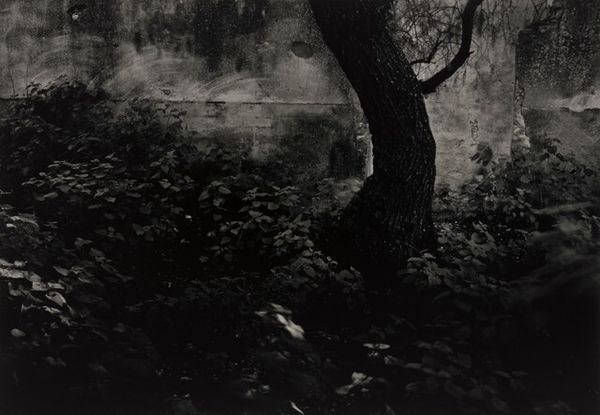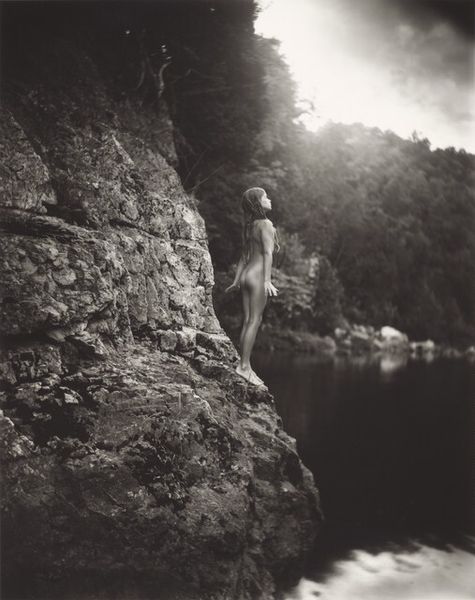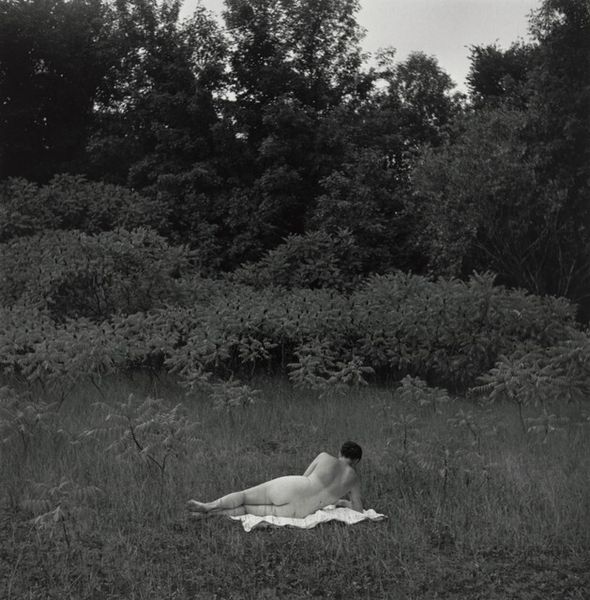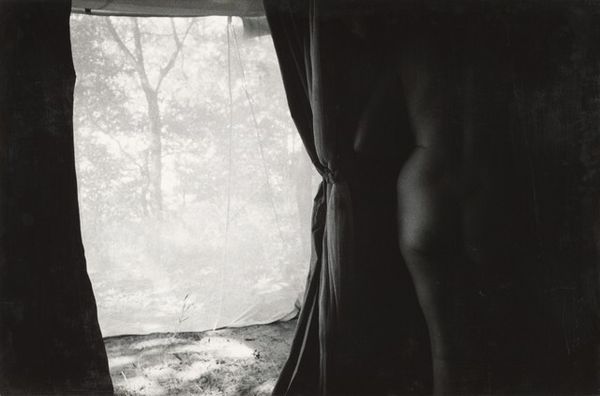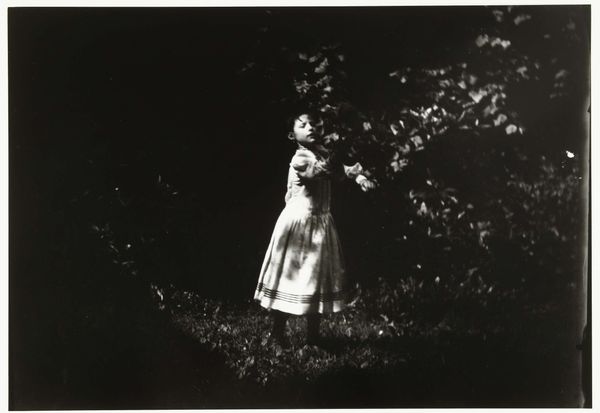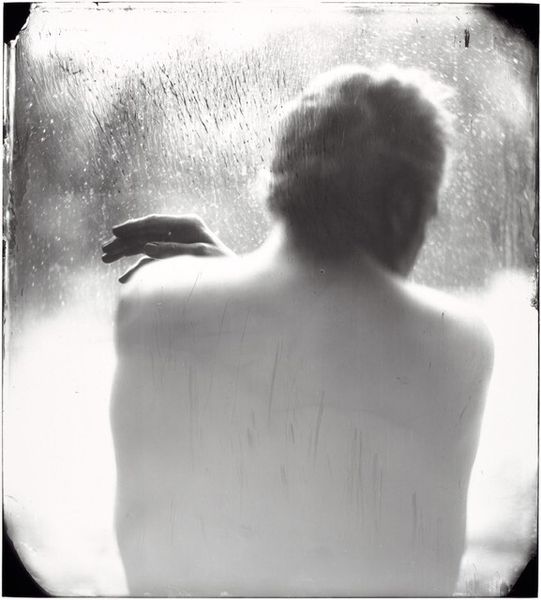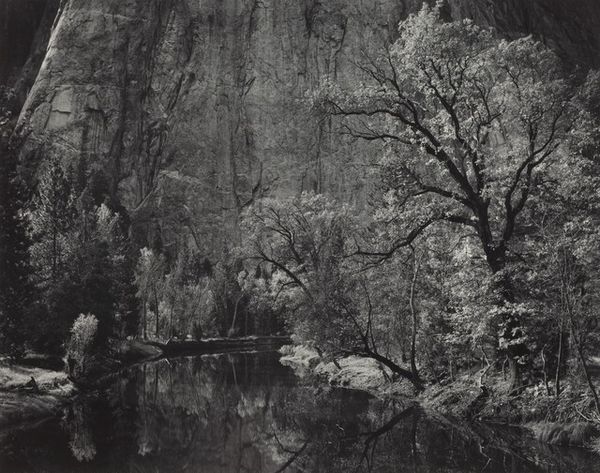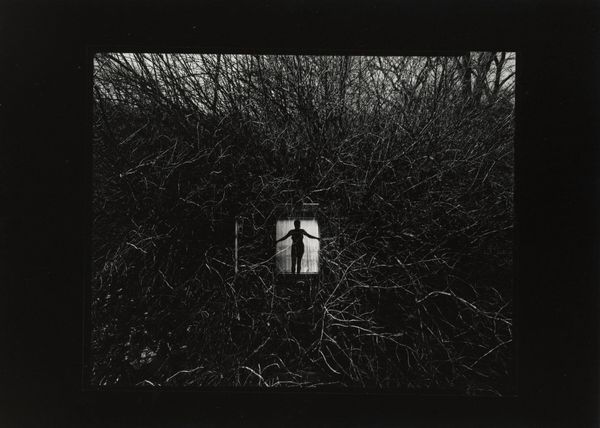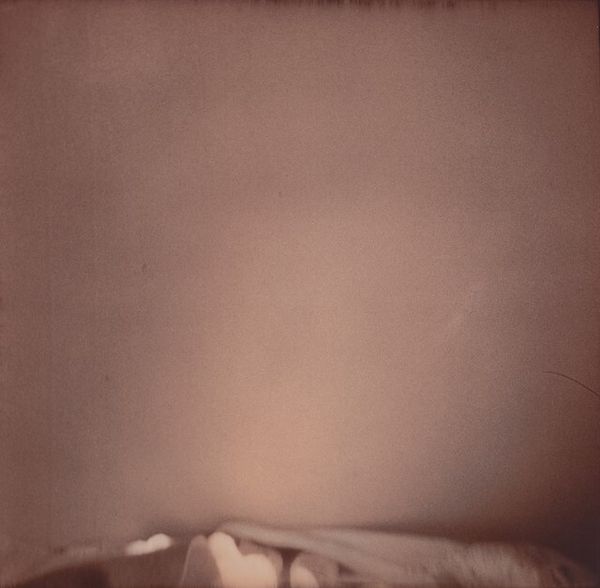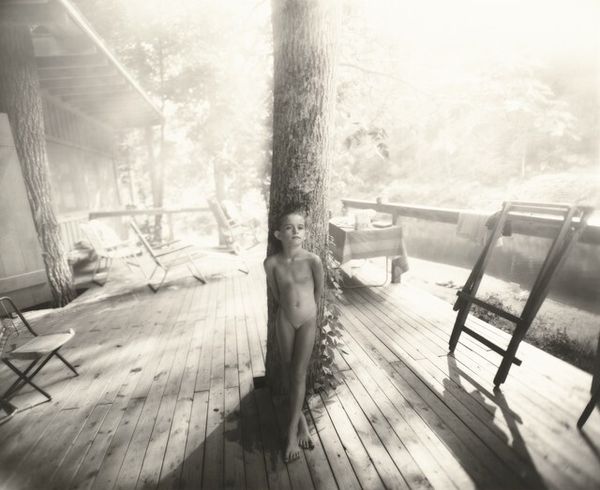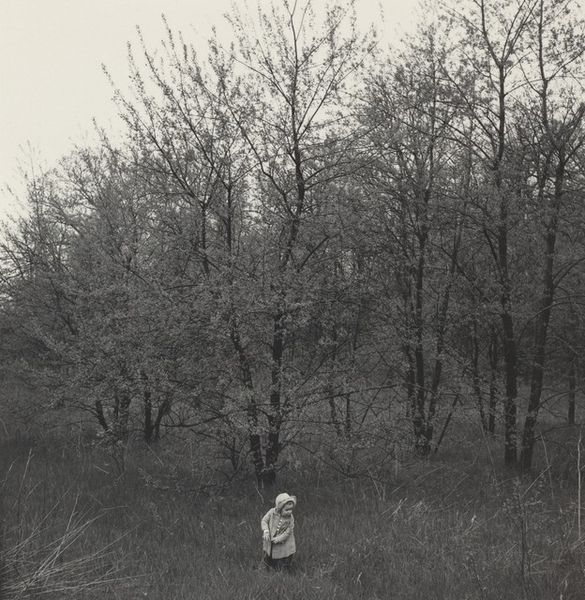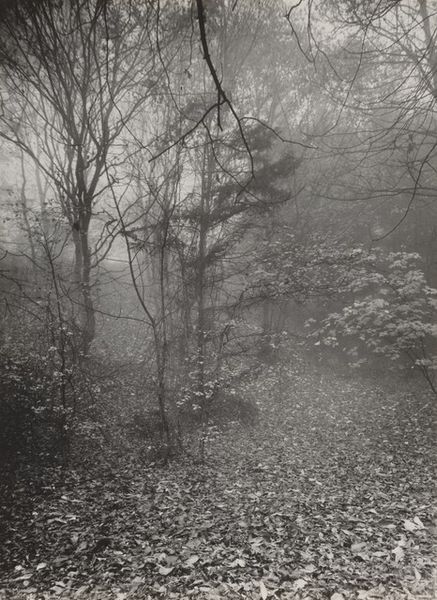
photography, gelatin-silver-print
#
portrait
#
landscape
#
photography
#
gelatin-silver-print
#
monochrome
Dimensions: sheet: 50.6 × 60.6 cm (19 15/16 × 23 7/8 in.) image: 49.2 × 59.6 cm (19 3/8 × 23 7/16 in.) framed: 73.03 × 83.19 cm (28 3/4 × 32 3/4 in.)
Copyright: National Gallery of Art: CC0 1.0
Curator: "The Alligator's Approach," a gelatin silver print by Sally Mann from 1988. There's a narrative ambiguity to it, a certain Southern Gothic feel. What's your immediate take? Editor: It strikes me as liminal, this black and white dreamscape. There's a stillness, and quiet menace suggested by the title, which seems a contradiction for such a tender image of childhood vulnerability. Curator: The title is definitely loaded, particularly given Mann’s broader body of work and the controversies surrounding her images of children. I wonder if the allusion to threat acts as a commentary on the gaze itself? Editor: Exactly, the "alligator" could be a metaphor for the encroaching loss of innocence, or the dangers, as you say, inherent in representation, the ever-present metaphorical predatory force of observation. What does the iconography tell us? We have this child on a deck chair and a discarded watermelon on the lower left! Curator: These are potent signifiers. A young girl, swathed in what seems like a blanket against the backdrop of a dense landscape and body of water, seems removed. The casual inclusion of the watermelon beside what seem to be discarded slippers underscores a certain rural, Southern American experience and the long, hazy days of childhood. There is the potential for real danger, though. Sally Mann gained national prominence by working against norms surrounding representations of children. Editor: Absolutely, and this connects deeply to a broader artistic tradition of confronting the darker undercurrents of childhood, recalling certain moments in the work of Diane Arbus. The monochrome palette only intensifies the stark contrast, lending the whole piece a timeless, almost mythological quality. What would this landscape mean to Mann, as she constructs these representations of Southern girlhood, particularly within an art world context? Curator: This photographic moment becomes part of a broader cultural and political conversation about childhood and artistic expression, inevitably raising questions about voyeurism, representation, and the power dynamics between photographer and subject, especially concerning issues surrounding what and who gets seen in the artworld and society at large. Editor: I think that consideration of cultural tensions provides another, particularly potent interpretive lens, and for me underscores the image's powerful staying power. Curator: I agree. Mann gives us such a rich space for critical engagement here, so full of possibility, even now.
Comments
No comments
Be the first to comment and join the conversation on the ultimate creative platform.
